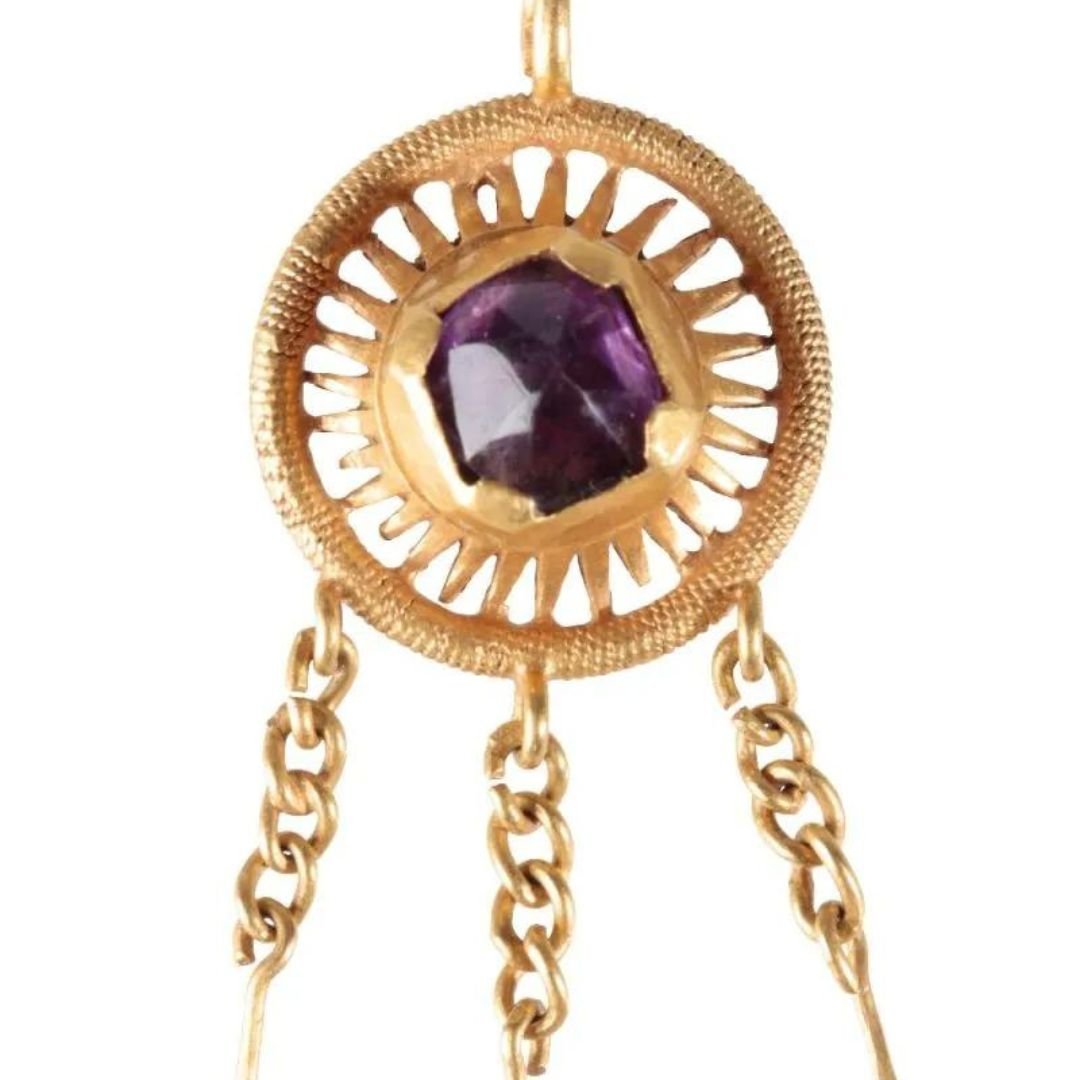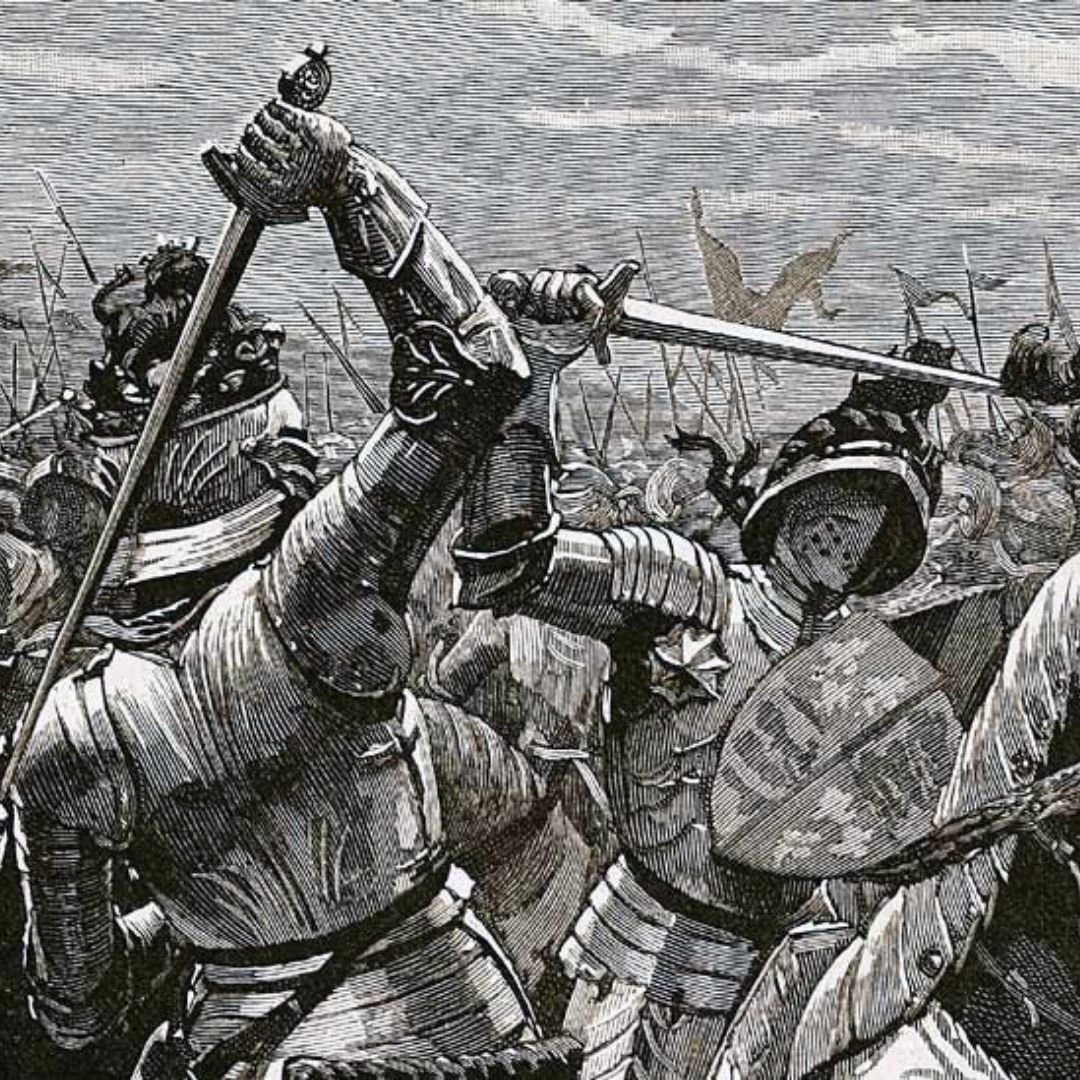A novice metal detector enthusiast stumbled upon a gold hat pin valued at £15,000, that is believed to be associated with King Edward IV’s reign in the 15th century.

Credit: Duke’s Auctioneers
Lisa Grace, 42, discovered the well-preserved Medieval jewel while combing through a freshly plowed field in Lincolnshire.
Experts speculate that the pin’s design strongly resembles accessories worn by Edward IV and his court during his reigns from 1460 until his passing in 1483, suggesting a royal connection.
Scholars suggest that the jewel, crafted in the late 15th century, bears the emblem of a sun in splendour, which was the personal symbol of Edward IV.

It was his personal emblem and appeared on various items related to his reign, including coins, banners, and jewellery.
There is speculation that the pin might have been lost during a battle, considering the tumultuous power struggles and conflicts that marked Edward IV’s first reign, many of which occurred in the vicinity.
The centrepiece of the pin features a purple amethyst stone, known to be one of the King’s preferred gems, prompting some experts to theorise that it could have been misplaced by Edward IV himself.
Remarkably, the pin bears a striking resemblance to a jewel depicted on Edward IV’s hat in a portrait housed at The Museum Calvet in Avignon, France.
Ms. Grace expressed her astonishment upon discovering the artifact just a few inches beneath the ground.

“When I found it, the jewel wasn’t far under the ground at all as the field had recently been ploughed,” she recounted.
The jewel, which remains in stunning condition, was sold at audio on April 26, 2019.
What was a hat pin?
A hat pin is a long, slender, pointed piece of metal used to secure a hat to the wearer’s head.
It typically consists of a decorative head on one end and a sharp point on the other.
Hat pins were commonly used in the past, particularly during the late 19th and early 20th centuries when hats, especially large and elaborate ones, were fashionable accessories for both men and women.

The hat pin would be inserted through the fabric of the hat and then through the wearer’s hair or hatband to hold the hat securely in place.
They were especially important for securing large and heavy hats, such as wide-brimmed hats or hats adorned with feathers and other embellishments, which could easily be dislodged by wind or movement.
Hat pins often served as fashion accessories themselves, coming in various designs and materials to complement the style of the hat or the wearer’s outfit.
They could be simple and utilitarian or elaborate and ornate, featuring decorative elements like jewels, enameled designs, or carved motifs.
In addition to their practical function, hat pins were also symbolic of social status and fashion sense during the era when they were most popular.

Edward IV was a significant figure in English history, serving as the King of England from 1461 to 1470 and again from 1471 until his death in 1483.
He belonged to the House of York and played a pivotal role in the Wars of the Roses, a series of civil wars fought between the Houses of Lancaster and York for control of the English throne.
Edward IV emerged victorious in this conflict, establishing the Yorkist dynasty and ending the rule of the Lancastrians.
He is particularly noted for his military prowess, including his decisive victory at the Battle of Towton in 1461, one of the bloodiest battles in English history.
The Battle of Towton was a significant engagement fought during the Wars of the Roses, a series of civil wars for the throne of England between the houses of Lancaster and York.

It took place on March 29, 1461, near the village of Towton in Yorkshire, England.
The conflict arose from the ongoing struggle between the Lancastrians, who were represented by King Henry VI, and the Yorkists, led by Richard, Duke of York, and his son Edward, Earl of March (later Edward IV).
The battle was the largest and bloodiest ever fought on English soil, with estimates of casualties ranging from 20,000 to 30,000.
Edward IV’s forces, consisting of Yorkist nobles and their supporters, faced off against the Lancastrian army led by Henry VI’s Queen, Margaret of Anjou, and the Duke of Somerset.
The battle began with exchanges of archery fire, followed by intense hand-to-hand combat.

Despite being outnumbered, the Yorkists managed to gain the upper hand, partly due to the arrival of reinforcements led by Edward’s ally, Lord Fauconberg.
The Lancastrians were pushed back, and many of them attempted to flee across Towton’s Great North Road, only to be slaughtered by pursuing Yorkist forces.
The Battle of Towton resulted in a decisive victory for the Yorkists. Edward IV ascended to the throne, consolidating the Yorkist claim to the crown and effectively ending the first phase of the Wars of the Roses.
As king, Edward IV pursued policies aimed at centralising royal authority and maintaining stability within the realm.
He implemented administrative reforms, fostered economic growth, and sought to bolster England’s position on the European stage through diplomatic alliances.

Edward IV’s reign was characterised by both prosperity and challenges.
Despite his successes, his rule was not without internal strife, including tensions with powerful noble families and occasional rebellions.
His sudden death in 1483, at the age of 40, led to a period of instability and ultimately the ascent of his young son, Edward V, to the throne.
However, Edward V’s reign was short-lived due to political machinations that led to the accession of Richard III.
Edward IV’s legacy remains complex, encompassing both his achievements as a military leader and monarch, as well as the controversies and conflicts that marked his reign.

If you enjoyed this blog post, please follow Exploring GB on Facebook for daily travel content and inspiration.
Don’t forget to check out our latest blog posts below!
Thank you for visiting Exploring GB.